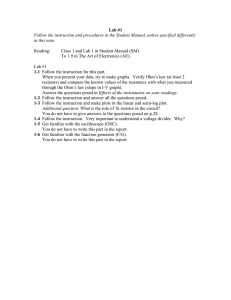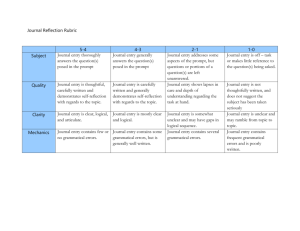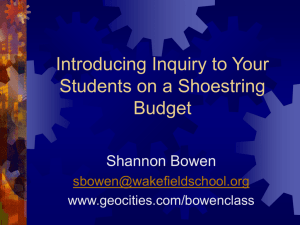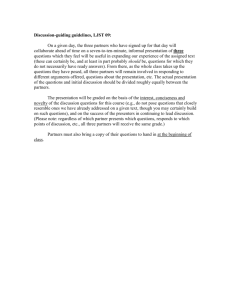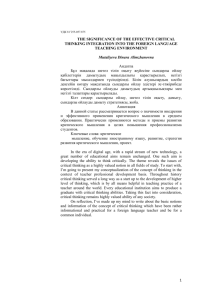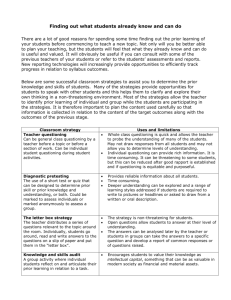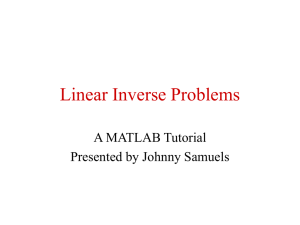Questioning-Strategies-to-Engage-All-Learners
advertisement
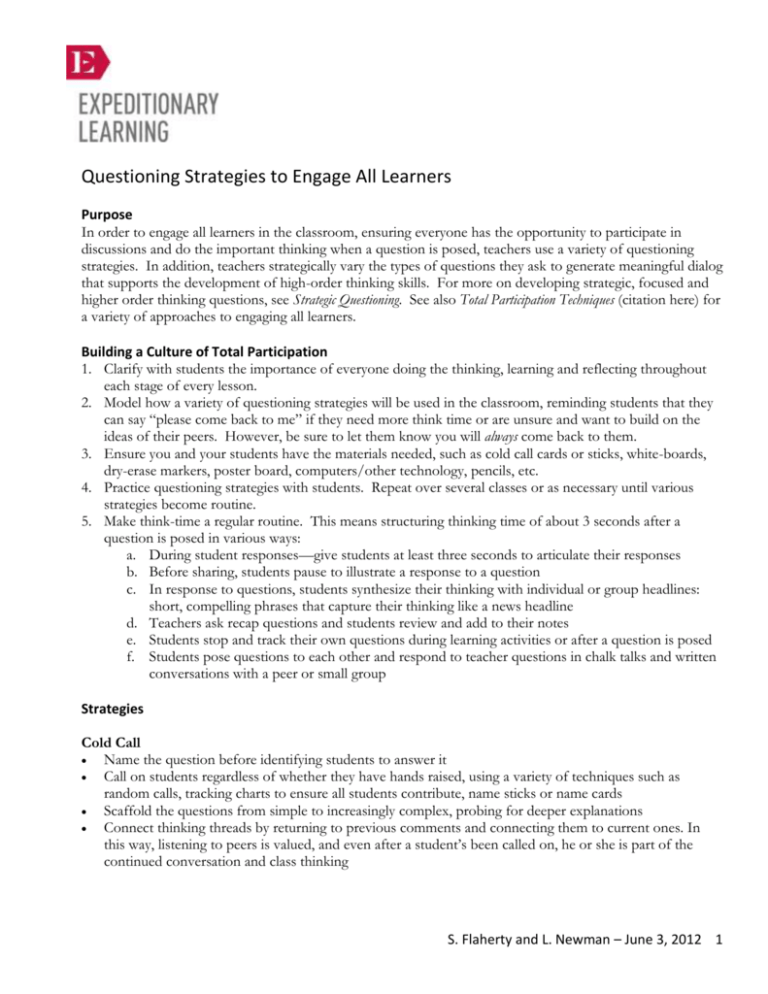
Questioning Strategies to Engage All Learners Purpose In order to engage all learners in the classroom, ensuring everyone has the opportunity to participate in discussions and do the important thinking when a question is posed, teachers use a variety of questioning strategies. In addition, teachers strategically vary the types of questions they ask to generate meaningful dialog that supports the development of high-order thinking skills. For more on developing strategic, focused and higher order thinking questions, see Strategic Questioning. See also Total Participation Techniques (citation here) for a variety of approaches to engaging all learners. Building a Culture of Total Participation 1. Clarify with students the importance of everyone doing the thinking, learning and reflecting throughout each stage of every lesson. 2. Model how a variety of questioning strategies will be used in the classroom, reminding students that they can say “please come back to me” if they need more think time or are unsure and want to build on the ideas of their peers. However, be sure to let them know you will always come back to them. 3. Ensure you and your students have the materials needed, such as cold call cards or sticks, white-boards, dry-erase markers, poster board, computers/other technology, pencils, etc. 4. Practice questioning strategies with students. Repeat over several classes or as necessary until various strategies become routine. 5. Make think-time a regular routine. This means structuring thinking time of about 3 seconds after a question is posed in various ways: a. During student responses—give students at least three seconds to articulate their responses b. Before sharing, students pause to illustrate a response to a question c. In response to questions, students synthesize their thinking with individual or group headlines: short, compelling phrases that capture their thinking like a news headline d. Teachers ask recap questions and students review and add to their notes e. Students stop and track their own questions during learning activities or after a question is posed f. Students pose questions to each other and respond to teacher questions in chalk talks and written conversations with a peer or small group Strategies Cold Call Name the question before identifying students to answer it Call on students regardless of whether they have hands raised, using a variety of techniques such as random calls, tracking charts to ensure all students contribute, name sticks or name cards Scaffold the questions from simple to increasingly complex, probing for deeper explanations Connect thinking threads by returning to previous comments and connecting them to current ones. In this way, listening to peers is valued, and even after a student’s been called on, he or she is part of the continued conversation and class thinking S. Flaherty and L. Newman – June 3, 2012 1 No Opt Out Require all students to correctly answer questions posed to them Always follow incorrect or partial answers from students by giving the correct answer themselves, cold calling other students, taking a correct answer from students with hands raised, cold calling other students until the right answer is given, and then returning to any student who gave an incorrect or partial answer for complete and correct responses Think or Ink-Pair-Share Students are given a short and specific timeframe (1-2 minutes) to think or ink (write) freely to briefly process their understanding/opinion of a text selection, discussion question or topic. Students then share their thinking or writing with a peer for another short and specific timeframe (e.g. 1 minute each). Finally the teacher leads a whole-class sharing of thoughts, often charting the diverse thinking and patterns in student ideas. This helps both students and the teacher assess understanding and clarify student ideas. Turn and Talk When prompted, students turn to a shoulder buddy or neighbor and in a set amount of time, share their ideas about a prompt or question posed by the teacher or other students. Depending on the goals of the lesson and the nature of the Turn and Talk, students may share some key ideas from their discussions with the class. Go-around When a one- or two-word answer can reveal student thinking, teachers ask students to respond to a standard prompt one at a time, in rapid succession around the room. Whiteboards Students have small white boards at their desks or tables and write their ideas/thinking/ answers down and hold up their boards for teacher and/or peer scanning. Hot Seat The teacher places key questions on random seats throughout the room. When prompted, students check their seats and answer the questions. Students who do not have a hot seat question are asked to agree or disagree with the response and explain their thinking. Fist-to-Five or Thumb-Ometer To show degree of agreement or commonalities in ideas, students can quickly show their thinking by putting their thumbs up, to the side or down; or by holding up (or placing a hand near the opposite shoulder) a fist for 0/Disagree or 1-5 fingers for higher levels of confidence or agreement. Human Bar Graph Identify a range of answers to a question or prompt as labels for 3-4 adjacent lines. Students then form a human bar graph by standing in the line that best represents their answer to the question(s) posed. Four Corners Students form four groups (vary the number based on your purpose) based on commonalities in their responses to a question posed. In those groups students discuss their thinking and one student shares their ideas with the class. Students in other groups/corners may move to that corner if they change their thinking based on what they hear. S. Flaherty and L. Newman – June 3, 2012 2
